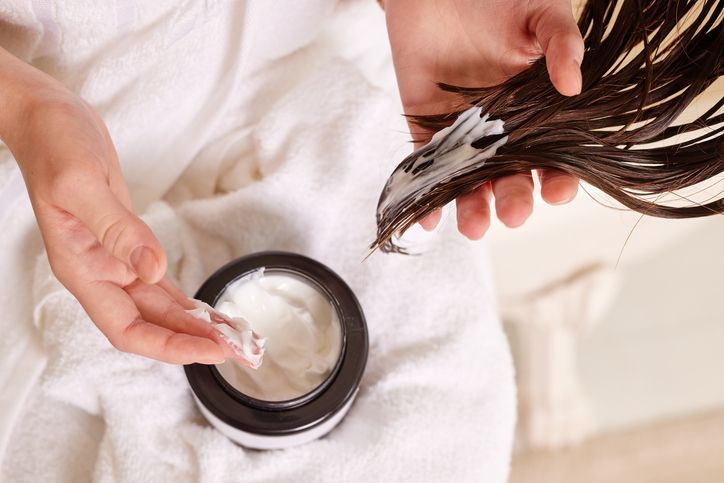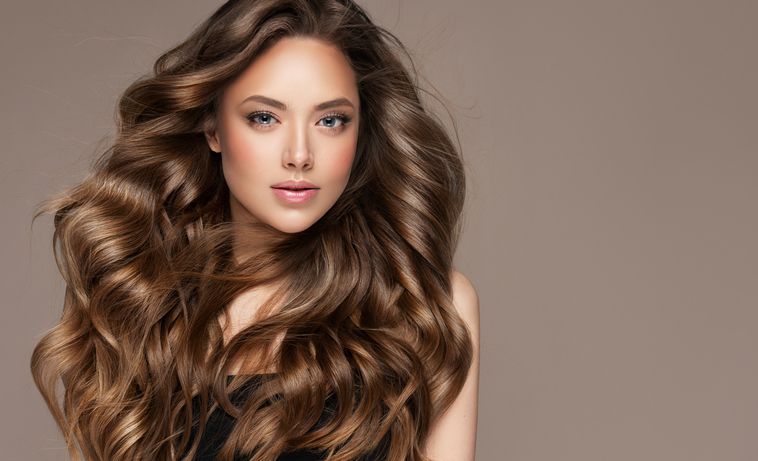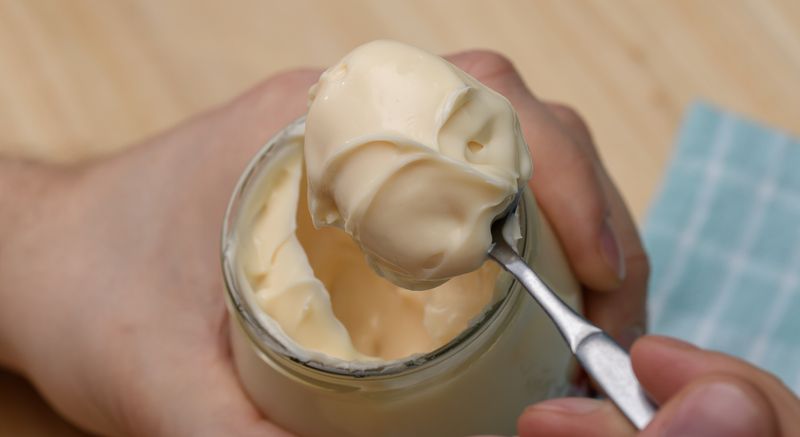- Home
- Trend
- Weight Loss Strategies
- Acne Tips
- Hair Health Information
- Blemish Removal Tips
- Acne Scar Removal Tips
- Muscle Building Techniques
- Intimate Care Tips
- Postpartum Intimate Care
- Eye Bags Wiki
- Tips for Face Slimming
- Secret of Permanent Hair Removal
- Breast Enlargement Tips
- Cure to Snoring
- Marionette Lines
- Skin-Tightening Secrets
Hair masks are a popular way to nourish and revitalise hair. Whether your hair is dry, damaged, or simply lacking lustre, a hair mask can provide the extra TLC it needs. With so many options available, it can be confusing to know where to start. This guide will help you navigate the world of hair masks, from choosing the right product to applying it effectively.
What Can a Hair Mask Do?

A hair mask is a deep conditioning treatment designed to nourish, strengthen, and hydrate your hair. Unlike regular conditioners, hair masks tend to be thicker and richer, providing more intensive treatment. They can target specific hair concerns, such as dryness, damage, frizz, or lack of shine, depending on the ingredients used. Hair masks come in a variety of formulations, each catering to different hair types and concerns:
1. Hydrating Hair Mask
Hydrating hair masks are essential for revitalising dry and damaged hair. They are specially formulated to infuse moisture back into the hair, making it softer, shinier, and more resilient. These masks often contain rich, nourishing ingredients like:
• Shea Butter: Shea butter is a natural emollient known for its deep moisturising properties. It penetrates the hair shaft to repair and smooth the cuticle, reducing frizz and leaving hair soft and silky. Its high concentration of vitamins A and E also helps protect hair from environmental damage.
• Avocado Oil: Packed with essential fatty acids, avocado oil is a lightweight oil that deeply hydrates the hair without making it greasy. It penetrates the hair shaft, providing nourishment and restoring moisture, which is particularly beneficial for hair that is dry, brittle, or prone to split ends.
• Plant Oils: Oils such as coconut, argan, and jojoba are commonly found in hydrating masks. These oils not only provide intense moisture but also contain antioxidants and vitamins that protect the hair from further damage, enhance shine, and improve manageability. Coconut oil, for instance, is known for its ability to penetrate deeply into the hair shaft, reducing protein loss and preventing breakage.
2. Oil-Based Mask
Oil-based hair masks are a godsend for those with thick, coarse, or curly hair. These masks provide intense nourishment and help tame unruly hair by smoothing the hair cuticle and adding a healthy, lustrous shine. They are typically enriched with various natural oils, each offering unique benefits:
• Argan Oil: Often referred to as "liquid gold," argan oil is rich in essential fatty acids, antioxidants, and vitamin E. It helps to hydrate and soften hair, making it smoother and more manageable. Argan oil also protects hair from heat damage and environmental stressors.
• Olive Oil: Olive oil is an excellent conditioner that penetrates the hair shaft, locking in moisture and preventing dryness. Its emollient properties help to smooth the cuticle, reduce frizz, and add a natural shine to the hair.
• Coconut Oil: Renowned for its ability to penetrate deep into the hair shaft, coconut oil helps to reduce protein loss in both damaged and undamaged hair. It also adds moisture and reduces breakage, making it ideal for thick and curly hair types that require extra nourishment.
3. Protein-Based Mask
Protein-based masks are vital for strengthening and repairing hair that has been weakened by chemical treatments, heat styling, or environmental stressors. These masks contain proteins that help to rebuild and fortify the hair’s structure, making it less prone to breakage:
• Keratin: Keratin is the primary protein found in hair, and it plays a crucial role in maintaining the hair’s strength and elasticity. Protein-based masks often include hydrolyzed keratin, which can penetrate the hair shaft and repair damage from within, restoring the hair’s natural resilience.
• Silk Proteins: Derived from the fibres of the silkworm, silk proteins help to smooth the hair cuticle and enhance shine. They create a protective barrier around the hair shaft, reducing moisture loss and protecting the hair from further damage.
• Wheat Protein: Wheat protein is known for its ability to strengthen and repair the hair. It helps to fill in the gaps in the hair shaft, making hair appear fuller and more voluminous. Wheat protein also enhances the hair’s ability to retain moisture, reducing dryness and brittleness.
4. Clarifying Mask
Clarifying masks are designed to detoxify the scalp and hair by removing excess oil, dirt, and product buildup. They are particularly beneficial for individuals with oily hair or those who use a lot of styling products:
• Activated Charcoal: Often found in clarifying masks, activated charcoal has powerful detoxifying properties. It draws out impurities from the scalp and hair, helping to remove excess oil and buildup from styling products. This results in a cleaner, more balanced scalp and hair that feels lighter and more refreshed.
• Bentonite Clay: Bentonite clay is another popular ingredient in clarifying masks. It works by absorbing excess oil and impurities from the scalp, while also providing essential minerals that nourish the hair. Bentonite clay can help to reduce scalp inflammation and improve overall scalp health.
• Apple Cider Vinegar: Known for its natural astringent properties, apple cider vinegar helps to balance the scalp’s pH levels and remove product buildup. It also smooths the hair cuticle, reducing frizz and enhancing shine.
How to Choose the Right Hair Mask for Your Hair Type

Choosing the right hair mask is crucial for achieving the desired results. Here’s how you can select the ideal hair mask based on your hair type:
For Dry and Damaged Hair
Look for hydrating hair masks that are rich in nourishing ingredients like shea butter, avocado oil, and natural oils. These ingredients help to replenish moisture and repair damaged hair shafts.
For Oily Hair
Opt for masks with clarifying properties that can remove excess oil without stripping your hair of essential moisture. Look for masks containing clay or charcoal, which can absorb oil while still providing nourishment.
For Color-Treated Hair
Colour-treated hair requires extra care to maintain its vibrancy and health. Protein-based masks that contain keratin or silk proteins can help strengthen hair and prevent breakage.
For Curly or Thick Hair
If you have curly or thick hair, choose a deeply moisturising hair mask that can penetrate the hair shaft and keep your curls defined and frizz-free. Look for masks that contain coconut oil, argan oil, or other rich oils.
For Fine or Thin Hair
Fine hair can easily become weighed down by heavy products. Choose lightweight, volumizing masks that add moisture without making your hair feel greasy or limp.
免費體驗
F8 Hair Regrowth Treatment
1 Minute Self-Registration
Date should not be before minimal date
Using a Hair Mask Correctly: Step-by-Step Guide
Using a hair mask correctly can make all the difference in achieving the best results. Here’s a detailed step-by-step guide:
1. Start with Clean Hair
The foundation of any effective hair treatment begins with clean hair. Washing your hair before applying a mask ensures that your hair is free from dirt, oils, and product residues that could hinder the mask’s absorption. Use a gentle shampoo that suits your hair type—one that cleanses without stripping your hair of its natural oils. Rinsing thoroughly with lukewarm water will open the hair cuticles slightly, allowing the mask to penetrate deeper into the hair shaft for maximum effectiveness.
2. Determine Your Hair’s Wetness
The condition of your hair—whether it’s wet, damp, or dry—can significantly influence how well the mask works:
• Wet Hair: For hydrating hair masks, especially those designed to restore moisture to dry or damaged hair, applying the mask to soaking wet hair is ideal. The water helps in distributing the mask more evenly and aids in the absorption of the hydrating ingredients. The moisture also ensures that the mask doesn’t clump or stick to certain areas, leading to a more uniform treatment.
• Damp Hair: For the majority of hair masks, applying them to damp hair offers the best balance. After washing your hair, gently blot it with a towel to remove excess water, leaving it damp but not dripping. Damp hair allows the mask to adhere properly and absorb without being diluted by too much water.
• Dry Hair: Some hair masks, particularly oil-based masks, are more effective on dry hair. The absence of water allows the oils in the mask to penetrate the hair shaft more deeply, offering intense nourishment and hydration. This is especially beneficial for hair that is coarse, thick, or severely damaged.
3. Apply the Mask Evenly
Proper application is key to getting the most out of your hair mask. Take a generous amount of the product, depending on your hair length and thickness. Begin applying from the mid-lengths to the ends, where hair tends to be more damaged and in need of repair. If you have specific scalp concerns, such as dryness or dandruff, apply the mask to the scalp as well. For even distribution, use a wide-tooth comb or your fingers to work the mask through your hair, ensuring that every strand is coated. This step is crucial to avoiding uneven results and ensuring that your hair receives the full benefit of the treatment.
4. Gently Massage
Massaging the mask into your hair and scalp not only helps with absorption but also stimulates blood circulation in the scalp, which can promote healthier hair growth. Use gentle, circular motions with your fingertips, starting from the scalp and moving down to the ends. This massage should be relaxing and thorough, helping the mask to penetrate deeply into the hair shaft. If using a wide-tooth comb, start from the ends and work your way up to avoid tangling and breakage.
5. Cover and Wait
After applying the mask, covering your hair can enhance its effectiveness. A shower cap works well to trap heat, which helps to open the hair cuticles, allowing the mask to penetrate even deeper. For an added boost, wrap a warm towel around the shower cap, or lightly heat your hair with a blow dryer on a low setting. The heat intensifies the mask's hydrating and restorative properties, making it more effective, especially for deep-conditioning treatments. Follow the mask’s recommended time—usually between 10 to 30 minutes. However, be cautious with extended leave-in times, as overuse can lead to product buildup or weigh your hair down.
6. Rinse Thoroughly
Once the mask has been allowed to work its magic, rinsing it out thoroughly is crucial. Use lukewarm water to rinse your hair, as hot water can strip your hair of moisture and undo the mask’s benefits. Ensure that you remove all the product from your hair, as any residue can leave your hair feeling heavy or greasy. Pay special attention to the roots and scalp, where product buildup is more likely to occur.
7. Condition (Optional)
After rinsing out the mask, assess how your hair feels. If your hair feels sufficiently soft and moisturised, you may not need to condition. However, if you feel your hair needs a little extra moisture or smoothness, apply a light conditioner to the ends. This step helps to seal in the moisture and adds an additional layer of softness and shine. It’s particularly beneficial if your hair is prone to dryness or frizz.
8. Air Dry or Blow Dry
Finally, decide whether you want to air dry or blow dry your hair. Air drying is the gentler option, reducing the risk of heat damage and preserving the benefits of the hair mask. If you prefer blow drying, make sure to apply a heat protectant first to shield your hair from potential damage. Use a blow dryer with a cool setting or keep the heat on low to minimise stress on the hair. Blow drying can also add volume and smoothness, but be careful to avoid over-drying, which can negate the mask’s moisturising effects.
F8 Hair Regrowth Treatment: Your Powerful Companion for Better Hair Health

While hair masks are excellent for hydrating, strengthening, and improving the overall health of your hair, they might not be sufficient if you’re dealing with more serious issues like hair thinning, significant hair loss, or damaged hair follicles. This is where the F8 Hair Regrowth Treatment comes in as an effective complement to your hair care routine.
The F8 Hair Regrowth Treatment uses low-energy laser beams combined with a specialised serum to stimulate blood circulation and promote the regrowth of hair. This advanced treatment targets the hair follicles directly, helping to prevent hair loss and encourage new hair growth. It's particularly effective for individuals experiencing thinning hair, hereditary hair loss, or other forms of hair damage.
How F8 Complements Your Hair Mask Routine
When used in conjunction with a regular hair mask routine, the F8 Hair Regrowth Treatment can significantly enhance the overall health of your hair. Here’s how:
1. Strengthening Hair Follicles
While hair masks nourish and hydrate the hair shaft, the F8 Treatment strengthens the hair follicles from within. This dual approach ensures that your hair is healthy both inside and out, reducing the likelihood of hair fall and breakage.
2. Promoting New Hair Growth
Hair masks are great for maintaining the health of existing hair, but they don’t stimulate new growth. The F8 Treatment targets dormant hair follicles, encouraging them to produce new hair and increasing overall hair density.
3. Reducing Hair Loss
The laser technology in the F8 Treatment helps to slow down hair loss by improving blood circulation to the scalp. This increased circulation provides essential nutrients to the hair follicles, making them stronger and more resilient. When combined with a nourishing hair mask, you can effectively manage and reduce hair loss over time.
Tips for Maximising the Benefits of Hair Masks

To get the most out of your hair mask and F8 Treatment, consider these tips:
- Use the Right Amount
Applying too much mask can weigh your hair down, while too little may not provide enough benefits. Start with a small amount and add more if necessary, ensuring that all your hair is coated evenly.
- Don’t Overuse
Using a hair mask too frequently can lead to product buildup, making your hair feel heavy and greasy. Stick to using a mask once or twice a week, depending on your hair type and needs.
- Combine with a Healthy Hair Care Routine
For best results, combine your hair mask and F8 Treatment with a comprehensive hair care routine. Use sulphate-free shampoos and conditioners, avoid excessive heat styling, and maintain a healthy diet rich in essential nutrients.
- Monitor Your Progress
Keep track of how your hair responds to the hair mask and F8 Treatment. If you notice any changes in your hair’s texture, strength, or growth rate, adjust your routine accordingly.
免費體驗
F8 Hair Regrowth Treatment
1 Minute Self-Registration
Date should not be before minimal date
Best Hair Mask Always Need an Ally
With the right products, proper application techniques, and a commitment to your routine, you can enjoy the benefits of healthy, vibrant hair. Whether you’re dealing with specific hair concerns or simply want to enhance the natural beauty of your locks, hair guide and F8 Hair Regrowth Treatment can help you achieve your hair goals. So, start your journey to better hair today! With the right approach, you’ll be well on your way to enjoying thicker, healthier hair that’s full of life and vitality.
F8 Hair Regrowth Treatment免費體驗
F8 Hair Regrowth Treatment
1 Minute Self-Registration
Date should not be before minimal date
FAQ

1. Can a hydrating hair mask help with a dry scalp, and how should I use it for best results?
Yes, a hydrating hair mask can help alleviate a dry scalp by delivering moisture to both your hair and scalp. To use a hair mask effectively for a dry scalp, apply it to wet or damp hair, focusing on the scalp area. Gently massage the mask into your scalp to ensure it penetrates the skin. Leave it on for the recommended time, usually 5–14 minutes, and then rinse thoroughly to remove any excess moisture.
2. Should I apply a hair mask to wet or dry hair to get the best results?
The application of a hair mask depends on the type of mask you're using. For hydrating hair masks, it’s best to apply them to wet or damp hair. Wet hair allows the mask to spread evenly and absorb better, enhancing its moisturising effects.
3. How often should I use a hair mask if I have long or short hair?
For both long and short hair, using a hair mask once a week is generally sufficient to maintain healthy hair. However, if your hair is particularly dry or damaged, especially if you use a hydrating hair mask, you might benefit from applying it 2–3 times per week.
4. What are the best hair masks for thicker hair that contain natural ingredients?
The best hair masks for thicker hair often include natural ingredients like shea butter, avocado oil, and honey. These ingredients provide deep nourishment and help retain moisture, making your hair softer and more manageable.
5. How do I avoid excess moisture after hair mask application, especially if I have a dry scalp?
To avoid excess moisture after applying a hair mask, make sure to thoroughly rinse your hair with lukewarm water. Pay special attention to the scalp area, particularly if you have a dry scalp, to ensure that no product is left behind. After rinsing, gently towel-dry your hair to remove any remaining moisture before styling.









